CTV:Mining Technology
Mining Technologies | Renewed Mining Research
This investigation of the Merkavot mines and OSL dating is conducted by Craig Smitheram as part of his MA research with the guidance of Dr. Noami Porat and Galina Faershtein of the Geological Survey of Israel, under the supervision of Dr. Erez Ben-Yosef, head of the Central Timna Valley Project (CTV).
The ancient copper mines of Timna Valley have been the subject of systematic research for the past 40 years led by Beno Rothenberg. Beginning in 2013, the Central Timna Valley Project (CTV) has renewed research on the mines with the goal of implementing a new dating method, Optically Stimulated Luminescence (OSL) and understanding technological evolution of mining. As human activity in mines leaves scant remains of material culture (i.e. pottery, organic material) making it difficult to date the mines use, we proposed a new study involving OSL to properly place chronological anchors for types of mining technologies. Rothenberg and the Arabah Expedition were the first to systematically excavate and identify three types of mining technology in Timna Valley.
Mining Technologies
Type A: open-pit mining technology is a method of extracting copper ore nodules by digging pits into a conglomerate gravel in the valleys below sandstone cliffs. These sandstone cliffs contain copper ore deposits, which have eroded and deposited the copper ore nodules into the silt and gravel conglomerate valleys over time. It is difficult to distinguish these types of mines (Figure 1; Merkavot 1) because they look like typical surface erosion in the valleys. However, the depressions on the surface represent ancient open-pit mining practice. When the miners extracted the copper ore nodules, they left shallow pits and over time are refilled with dust, silt and rocks that leave the even more shallow in the present day. Due to the simple nature of this mining technology, it has long been associated with the chalcolithic period.
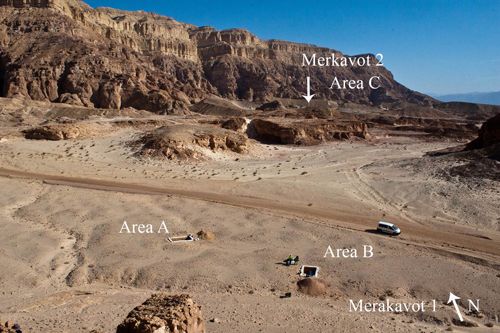
Figure 1 – Open-pit mining at Merkavot 1 excavations at during the 2013 field season.
Type B: A form of shaft and gallery mining technology identified by use of stone tools to carve into the copper ore bearing sandstone for extraction and considered to be an early phase of the shaft and gallery technology (Figures 2, 3).
Type C: A more advanced form of shaft and gallery mining technology identified by the use of metal tools to carve into the copper ore bearing sandstone (Figures 2, 3, 4, 5). Thousands of shafts (Figure 3) in Timna Valley are associated with this type of mining technology, with the majority used for the prospection of copper ore. Upon reaching a copper ore vein was an extensive system of galleries and transport and ventilation shafts created. The findings of the Arabah Expedition date this form of mining technology to the Egyptian New Kingdom.
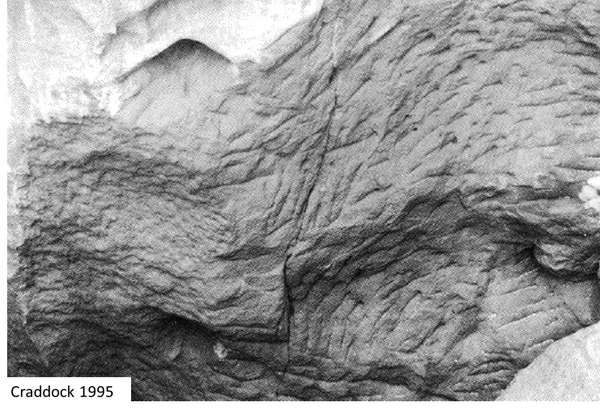
Figure 2 - Photo of mines S28/2 and S28/3 demonstrating two forms of mining technologies in the copper bearing sandstone. The left portion of this gallery exhibits Type B, (early phase) which shows cut marks using stone tools; the right portion shows Type C (late phase), cut marks made with a metal chisels.
The majority of mines of Type C are dated to the Egyptian New Kingdom based on the Arabah Expedition discovery and excavation of the Hathor Temple (Site 200) in 1969 and further hypothesized that this represents the major period of production in Timna Valley. The advanced technology, Type C (using metal chisels), is revealed on the walls (Figures 2, 4, 5), while the simpler technology, Type B, (using hammer stones) is also revealed on the walls of the mining gallery (Figures 2, 4). Because of the simple nature of the Type B (found in Mine T), it has been associated to the same period of exploitation as Type A, the chalcolithic period.

Figure 3 – Thousands of ‘plates’ represent blocked shaft and gallery mining are found throughout Timna Valley (photo courtesy of Rita Mendes-Flohrs).
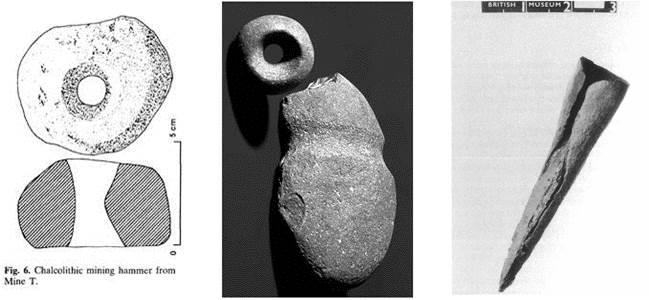
Figure 4 – The mining tools of Timna, the early phase of mining technology is represented by the stone hammer stones (Type B) and the later phase of mining technology is represented by the metal chisel (from Craddock 1995).

Figure 5 – Diagram of the latest phase of mining technology (Type C) associated with Egyptian New Kingdom where ancient miners would dig shafts using a metal chisel (From Cradock 1995: 68).
CTV- Renewed Mining Research and Results
The mining technologies above have been described by the view of the Arabah Expedition and follow a general assumption that simpler mining does not require knowledge of advanced technology; therefore, the simpler the technology represents an earlier form of mining. Type A, open-pit mining technology was determined to date the late Neolithic-Chalcolithic period based on this assumption; however, there was no way to accurately date these mines other then what remained on the surface.
In the renewed mining research conducted by the CTV, a new dating method was proposed to provide a chronological anchor for these mines and mining technologies within Timna Valley. The method that we successfully is applied, Optically Stimulated Luminescence (OSL), a dating technique that measures the amount of energy stored fine-sand quartz grains from they last time they are exposed to light. Once a mine is abandoned and starts a process of being refilled, either naturally or through anthropogenic means, the quartz grains are covered in deposition and no longer exposed to light. In a laboratory setting, we can produce a date to the amount of time these quartz grains were covered in deposition; thus, producing the last time before which the mine was active.
Our study tested two mining areas known as Merkavot 1 and Merkavot 2 (Figures 1, 6, 7) located near the chariot rock drawings in Timna Valley. Two types of mining technology were investigated – Type A (open-pit mining) represented by Merkavot 1 and Type B/C (shaft and gallery mining) a ‘plate’ represented by Merkavot 2.

Figure 6 - Map of archaeological sites of Timna Valley. Note - The 'modeled survey' area of the Arabah Expedition is outlined with a black box. The sites that we systematically excavated are marked in blue. (Adapted from Ben-Yosef et al. 2012; based on Rothenberg 1990).

Figure 7 – Satellite view – Locations of Merkavot 1 and Merkavot 2 (Google Earth)

Figure 8 – Geological map of Timna Valley, outlined with a red box is the research area of the CTV mining investigations (Beyth et al 2012).
The OSL field sampling (Figure 10) and processing was conducted under the guidance of Dr. Naomi Porat and Galina Faershtein in collaboration with Craig Smitheram and the CTV team. Our results from the excavated mines provide a reliable anchor for dating ancient mines. Our results show that open-pit mining at Merkavot 1 (Area A) took place in the Chalcolithic period (Figure 11), but was also mined during the end of the 2nd millennium BCE (Area B) (Figure 12). At Merkavot 2 (Figures 13, 14), the mineshaft that was excavated (Area C) dated to the Chalcolithic period and affirmed Type B typology of the Arabah Expedition. The following figures display our results:
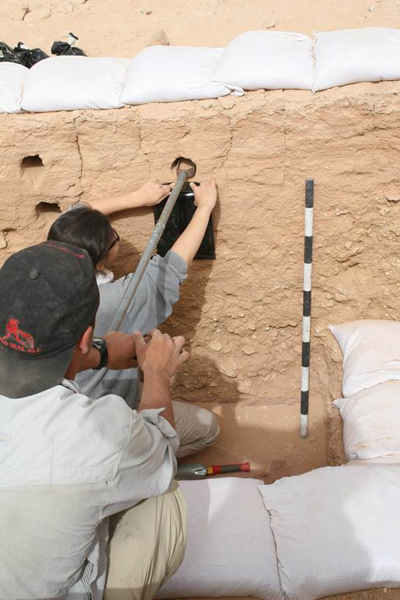
Figure 10 – OSL sampling at Merkavot 1 (note: this is for demonstration purposes, all samples were collected under the darkness of light in order to prevent contamination of the sample).

Figure 11 – Merkavot 1 Area A – Chalcolithic open-pit mine.

Figure 12 - Merkavot 1 Area B – Mine dating to the Late Bronze – Iron Age.
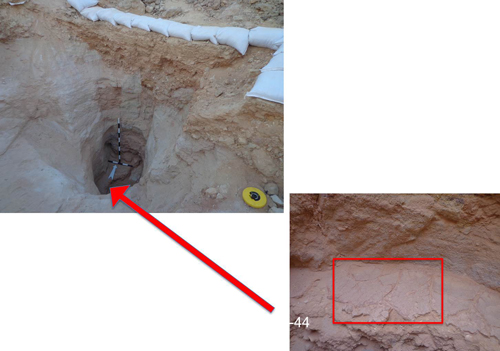
Figure 13 – Merkavot 2 Area C – Excavated mining shaft and OSL sample location taken from within the shaft.

Figure 14 – Merkavot 2 Area C – Shaft mining technology dating to the Chalcolithic-Early Bronze Age.
In conclusion, our systematic study of mining technology demonstrates, for the first time, the application of OSL to date shaft-mining technology. Our results present important chronological anchors for understanding of technological evolution of mining in Timna Valley and calls for a reappraisal of the model put forth by the Arabah Expedition.
For more in-depth description of the CTV research on OSL and mining technology view our 2013 poster submission for the annual ASOR conference HERE.
